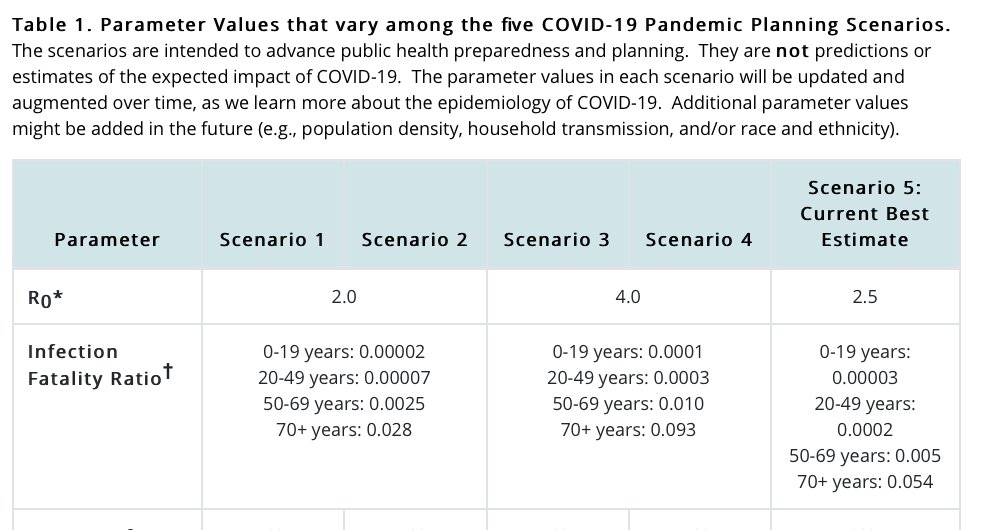One intriguing aspect about the #COVID19 pandemic is that we still have no good idea about the virus& #39; Infection Fatality Rate (IFR), and we don& #39;t even seem to be making much progress.
1/
1/
There is some irony in us still not having any meaningful estimate for #COVID19 IFR in essentially any setting given that IFR was the focus of a remarkably heated, if not at times outright toxic, debate from the beginning of the pandemic.
2/
2/
It is important to stress that averages over demographic groups are not that informative in themselves. Age is a major determinant for #COVID19 morbidity and mortality with a >1000x higher risks for seniors, relative to children or healthy young adults.
3/
3/
A complicating factor is that #COVID19 IFRs might have decreased, possibly due to multiple reasons, such as improved treatment, seasonality, or behavioural change leading to infections being caused by a lower & #39;viral infecting dose& #39;, but viral evolution seems to play no role.
4/
4/
A large number of studies have attempted to estimate #COVID19 in various settings based on a ratio of deaths over the proportion of people having antibodies against #SARSCoV2. The resulting IFR estimates vary wildly and some feel highly implausible.
5/
5/
The oft quoted & #39;authoritative& #39; figures by the CDC for the US are actually not based on US data. They represent an unweighted average of the IFR in Europe based on six papers/preprints, some of which may be a bit out of date. Which is puzzling.
https://www.cdc.gov/coronavirus/2019-ncov/hcp/planning-scenarios.html
6/">https://www.cdc.gov/coronavir...
https://www.cdc.gov/coronavirus/2019-ncov/hcp/planning-scenarios.html
6/">https://www.cdc.gov/coronavir...
Recently, Mike Ryan from the WHO stated that ~10% of the human population may have been infected by #SARSCoV2. It is unclear what this estimate is based on. Though, as ~1M people have been recorded as having died from #COVID19, this would correspond to a global IFR of ~0.13%.
7/
7/
The global IFR guesstimate of ~0.13% is remarkably rough. The 1M deaths recorded from #COVID19 could be both an under-, or an overestimate. More importantly, the proportion of humanity exposed to the virus could be both significantly smaller or larger.
8/
8/
We can apply the same logic to any country for which reliable #COVID19 mortality is available. For example, assuming 10-20% of the US population has been infected so far, and 215k people died, we get an IFR for the US of ~0.33-0.66% ± quite a bit.
9/
9/
#COVID19 IFRs between countries / regions are expected to vary considerably and many discussions about its second, if not third decimal in various settings, and what it means in terms of the strategy we should embark on, feel somewhat sterile at times.
10/
10/

 Read on Twitter
Read on Twitter


